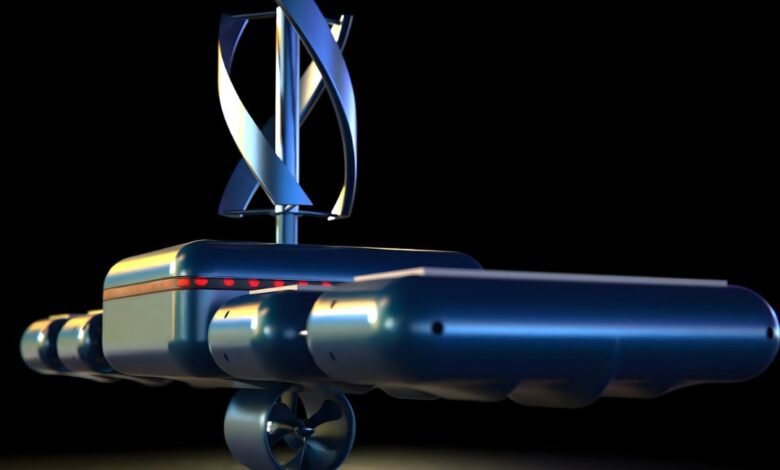WAVR-297: Understanding, Application, and Impact

Introduction
WAVR-297 is a term gaining attention across various sectors. It represents an innovative tool or concept utilized in different industries for specific purposes. This article will explore WAVR7 in detail, its applications, benefits, and impact.
What is WAVR-297?
WAVR-297 is a designation for a tool, model, or methodology used in industry and research. The exact nature of WAVR can vary, but it often involves advanced technology, analytics, or frameworks designed to improve processes, enhance safety, or deliver better outcomes.
Key Features of WAVR-297
- Efficiency: Enhances productivity by optimizing processes.
- Reliability: Ensures consistent and dependable results.
- Scalability: Can be adapted for different scales and contexts.
- Innovation: Incorporates cutting-edge technology and methods.
Applications of WAVR-297
WAVR-297 is applied in various fields including healthcare, engineering, and information technology. Each application leverages its unique capabilities to achieve specific goals.
Healthcare
In healthcare, WAVR can be used for patient monitoring, predictive analytics, and improving treatment outcomes. For instance, it might be involved in developing predictive models for patient deterioration, enabling proactive interventions.
Engineering
In engineering, WAVR might be used for structural analysis, safety assessments, and project management. This ensures that projects are completed efficiently and safely, with minimized risks.
Information Technology
In IT, WAVR-297 could be part of data analytics, cybersecurity, or software development processes. It helps in managing large data sets, securing information, and creating robust software solutions.
Benefits of WAVR-297
Implementing WAVR-297 offers numerous benefits across different sectors. These benefits can significantly improve operational efficiency and outcomes.
Increased Efficiency
WAVR-297 streamlines processes, reducing time and resource consumption. This leads to faster completion of tasks and projects.
Enhanced Accuracy
With WAVR-297, the accuracy of processes and outcomes is significantly improved. This reduces errors and enhances the quality of results.
Cost Reduction
By optimizing processes and reducing errors, WAVR-297 can help in lowering operational costs. This makes it a cost-effective solution for many industries.
Improved Safety
In industries where safety is paramount, WAVR-297 can help in identifying and mitigating risks. This leads to safer working environments and better protection for workers.
How WAVR Works
The operation of WAVR depends on its application. However, it typically involves data collection, analysis, and application of findings to optimize processes.
Data Collection
WAVR collects data from various sources, which could include sensors, databases, or manual inputs.
Data Analysis
The collected data is then analyzed using sophisticated algorithms or models. This helps in identifying patterns, trends, and areas for improvement.
Application
The insights gained from the data analysis are then applied to improve processes, enhance safety, or achieve other specific goals.
Table: Comparison of WAVR Applications
| Field | Use Case | Benefits |
| Healthcare | Patient Monitoring | Improved treatment outcomes |
| Engineering | Structural Analysis | Enhanced safety and efficiency |
| Information Technology | Data Analytics | Better decision-making |
| Manufacturing | Quality Control | Reduced defects and costs |
| Education | Learning Analytics | Personalized learning experiences |
Challenges of Implementing WAVR
While WAVR offers many benefits, there are also challenges in its implementation.
Complexity
The complexity of WAVR can be a barrier, especially for organizations with limited technical expertise.
Cost
Initial implementation costs can be high, although the long-term savings often outweigh these initial expenses.
Resistance to Change
Organizations may face resistance to change from employees who are accustomed to existing processes.
Overcoming Challenges
To successfully implement WAVR, organizations can adopt several strategies.
Training
Providing training for employees can help in overcoming resistance and ensuring successful implementation.
Phased Implementation
Implementing WAVR in phases can make the process more manageable and reduce initial costs.
Expert Consultation
Consulting with experts can help in navigating the complexities of WAVR-297 and ensuring successful deployment.
Future of WAVR
The future of WAVR looks promising, with advancements in technology likely to enhance its capabilities further.
Integration with AI
Integrating WAVR with artificial intelligence can enhance its analytical capabilities, leading to even better outcomes.
Broader Applications
As technology advances, the applications of WAVR-297 are likely to expand, covering more industries and use cases.
Improved Accessibility
Advancements in technology will also make WAVR-297 more accessible, even for small and medium-sized enterprises.
FAQs
What is WAVR?
WAVR-297 is a tool or methodology used across various industries to optimize processes, enhance safety, and improve outcomes.
How is WAVR used in healthcare?
In healthcare, WAVR is used for patient monitoring, predictive analytics, and improving treatment outcomes.
What are the benefits of WAVR?
The benefits of WAVR include increased efficiency, enhanced accuracy, cost reduction, and improved safety.
How can organizations overcome the challenges of implementing WAVR?
Organizations can overcome these challenges by providing training, implementing WAVR in phases, and consulting with experts.
Conclusion
WAVR-297 is a powerful tool with a wide range of applications and significant benefits. Despite the challenges, its potential to improve efficiency, accuracy, and safety makes it a valuable asset in various fields. As technology continues to evolve, the capabilities and applications of WAVR are likely to expand, offering even greater benefits in the future.



